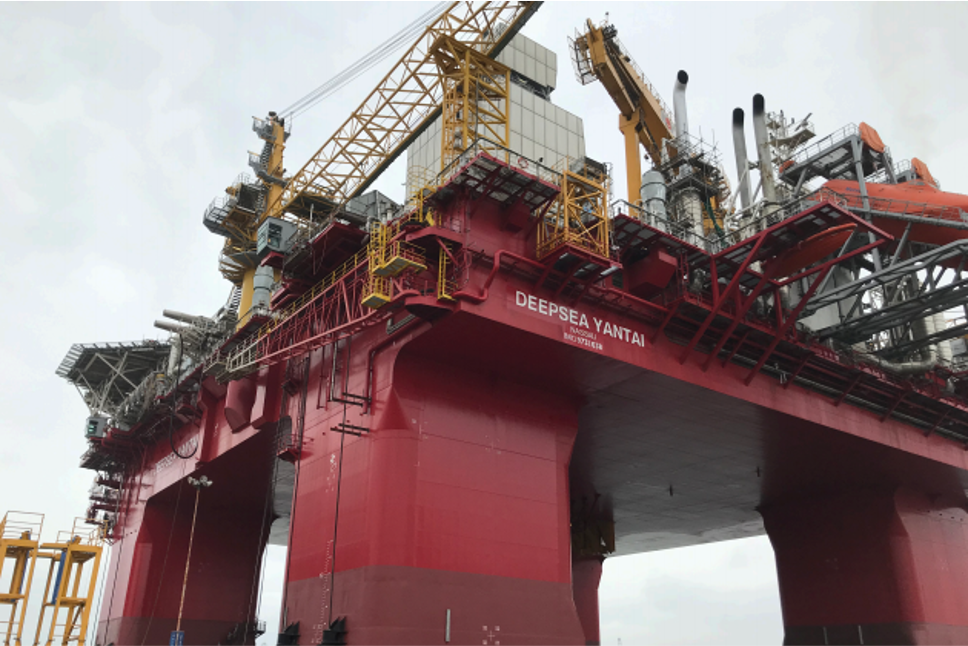Neptune has recently received NPD approval to drill the Dugong Tail prospect in PL882. Two wells are planned, the vertical 34/4-16 and if successful it will be side-tracked down-dip to the north. These wells will be followed by the Dugong appraisal 34/4-17 where a DST will be conducted in the Brent to evaluate the dynamic reservoir deliverability.
In this review, we will look at the block 34/4 exploration history from 1981 to 2020 and how prospectivity down-dip from the Snorre Field has been tested over the years.
A disappointing start
The story does not start on an encouraging note. Well 34/4-3, spudded by Saga Petroleum in 1981, was the first well drilled north of the Snorre mega footwall. The primary target was to test a thick Upper Jurassic wedge section in the Gamma prospect. Unfortunately, it encountered water wet Draupne sandstones and the secondary Brent target was also water wet.
After a long break, enthusiasm for the area returned and two key wells were drilled in the late nineties. The “Dugong” relay ramp between the Gamma and the Beta faults was drilled for the first time by Saga in 1994 through 34/4-8. Located to the northeast of the future Dugong discovery, the target sandstones of the Statfjord Fm were dry. The aquifer was proven to be in pressure communication with Snorre, so trapping was identified as the main problem.
A few years later, 34/7-27 (PL089) tested the Brent interval a little bit further south, but yet again without success. Well 33/6-2, the second one to test prospectivity in the southwest of the “Dugong” relay ramp, was mainly drilled to test Upper Jurassic reservoirs. A dry reservoir was found in this well too. After a further relinquishment the 34/4 area was awarded to Petro-Canada Norge AS in the APA 2005 round as PL375.

An encouraging campaign
In the year 2000, it was Saga that first discovered Brent oil in the area through drilling well 34/4-10R in the “Beta” prospect north of the Dugong area. It was classified as a HPHT prospect with the pre-BCU targets at depths of greater than 4000 m.
The Beta discovery was successfully appraised by well 34/4-11 in 2010 (Brent and Statfjord) and again by well 34/4-13 a year later (Statfjord, 2011). Well 34/4-14 S was drilled in 2015 to appraise the Beta Statfjord but it encountered a water wet Lower Jurassic interval.
Despite the apparent exploration success, the licence was once again partly relinquished, with the operatorship of PL375 B containing the Beta discoveries transferred to Equinor in 2019. According to the NPD, the 34/4-11 discovery contains 20 MMboe whilst no estimate is given for 34/4-10.

Dugong Discovery
It is in the context of the mixed exploration results in the area north of Snorre, with two dry wells on either side of the “Dugong prospect (33/6-2 in the southwest and 34/4-8 in the northeast) in the same relay ramp complex, that it must be seen as a courageous move from Neptune and partners to drill 34/4-15S last year.
It paid off though, and the partnership announced a discovery of 40-120 MMboe recoverable. The reservoir mainly constitutes of the Rannoch sandstones of the Brent, but oil was also found by appraisal well 34/4-15A in intra-Draupne sands of the Sjøpølse prospect.
The oil in Dugong is trapped though a combination of reservoir truncation in the direction of well 34/4-8, faulting both in the north and the south and finally a dip closure towards the southwest.
It is the truncation trap to the northeast that has probably been the key aspect as to why Dugong succeeded whilst the two wells drilled in the same relay ramp structure failed (see this cross-section as an illustration). In addition, as outlined by Carly Marshall during last year’s NCS Exploration Conference, relay-ramps often form conduits for hydrocarbon migration and this may have formed another essential ingredient to the exploration success.
The upcoming Dugong Tail 34/4-16(S) wells will now test another fault panel within the relay ramp structure, so let’s hope the partnership is able to further de-risk the successful concept proven in last year.
JOHN WOOD




